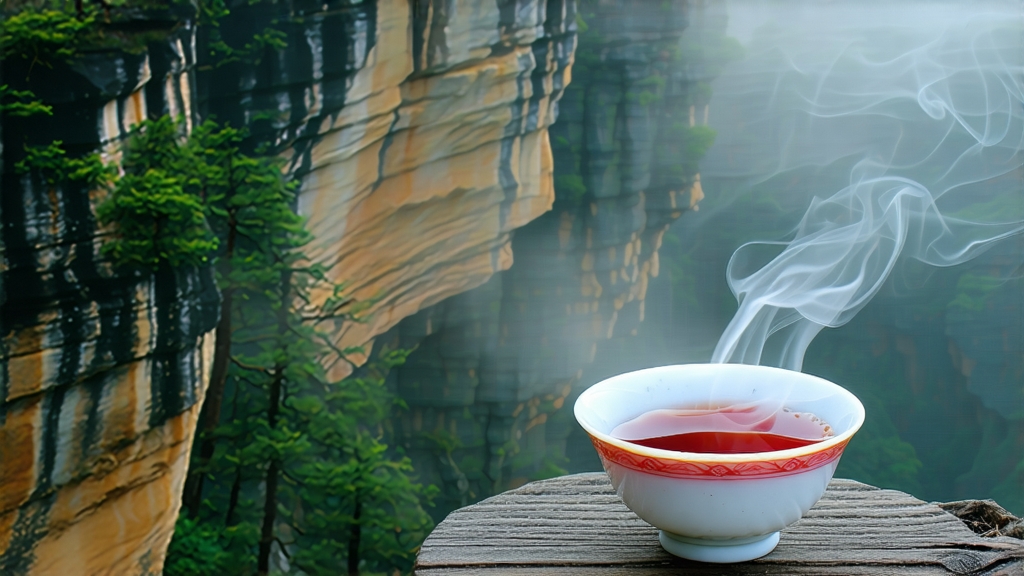
If every tea tells a story, Lapsang Souchong whispers it through a veil of pine smoke. Revered as the first black tea ever created, this rugged leaf from the Wuyi Mountains of Fujian province ignited a 400-year love affair between China and the West, forever changing global palates and trade routes. Today the name evokes camp-fire romance for some and polarizing pungency for others, yet beneath the fragrance of resin lies a surprisingly nuanced cup that can taste of longan, cinnamon, and even malted cocoa. To understand Lapsang Souchong is to witness history suspended in amber liquor, a journey that begins with fleeing armies, entrepreneurial monks, and the scent of burning pine.
Historical legend places the birth of Lapsang Souchong during the late Ming dynasty, around 1604, when imperial troops quartered themselves in the small village of Tongmu. Farmers, anxious to dry freshly picked leaves before they spoiled, hastily placed them over smouldering pine fires. The accidental smoke infusion produced a dark, assertive tea that delighted the first Dutch merchants who carried it to Europe. By the early 1700s “bohea” (a corruption of “Wuyi”) had become the most expensive commodity in London auctions, outpricing even the finest green teas. The British East India Company scrambled to replicate it in Assam and Ceylon, laying the groundwork for the Indian tea industry. Thus, a humble Fujian village gave the world not only black tea as a category but also the economic engine that would fuel empires.
Geographically, authentic Lapsang Souchong can only originate within the 600-square-kilometre core protection zone of the Wuyi Mountain Nature Reserve, a UNESCO dual heritage site where granite cliffs plunge into the Jiuqu (“Nine-Bend”) River. The subtropical monsoon climate shrouds the terraces in fog 200 days a year, slowing photosynthesis and concentrating amino acids that later translate into sweetness. Indigenous varieties—most notably Xiao Ye Zhong (“small-leaf species”) and the even rarer Ye Sheng (“wild”) cultivar—thrive in mineral-rich lateritic soil, their roots clinging to cracks in weathered rock. These micro-terroirs create the tea’s signature “yan yun” or “rock rhyme,” a lingering mineral note that connoisseurs liken to wet slate after rain.
Although Western markets often treat Lapsang Souchong as a monolith, Chinese traders recognize at least four distinct styles. Traditional Smoke-dried Souchong (Zheng Shan Xiao Zhong) uses only the Nature Reserve’s pine wood, imparting a clean, resinous aroma that dissipates quickly to reveal honeyed fruit. New-Process Souchong (Wu Yan Xiao Zhong) omits smoking entirely, aiming for a malt-and-caramel profile that appeals to modern domestic drinkers. Cutting-Smoke Souchong (Qie Yan Xiao Zhong) receives a brief, 30-minute exposure to pine smoke at the end of firing, yielding a balanced cup that bridges both camps. Finally, Wild Souchong, harvested from untended bushes above 1,200 m, offers complex notes of orchid, dried apricot, and a faint whisper of camphor—proof that smoke is only one chapter of the story.
Craftsmanship begins in mid-April when the standard is “two leaves and a bud, still folded like a sparrow’s tongue.” Pickers work between 8 a.m. and noon to avoid overnight dew that could muddy flavour. The leaves are then laid 3 cm thick on bamboo trays inside a dimly lit, pine-wood loft where withering occurs in three stages: sun-withering (30 min), indoor air-withering (3 h), and smoke-withering (6 h). Temperature and humidity are never written down; masters gauge them by the tackiness of the leaf edge and the aroma rising from the trays. Once the leaves turn jade-green and emit a baked-apple fragrance, they are rolled for 45 minutes on a cast-iron plate heated indirectly by charcoal. Rolling ruptures cells, initiating oxidation that darkens the leaf from olive to mahogany within two hours. The critical smoking follows: producers build a pinewood fire in an underground pit, cover it with ash to reduce flames to fragrant smoke, then suspend the oxidized leaves on mesh screens 1.5 m above.